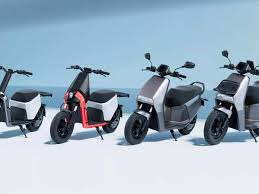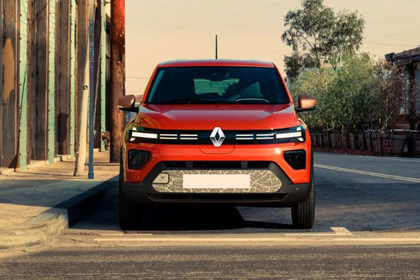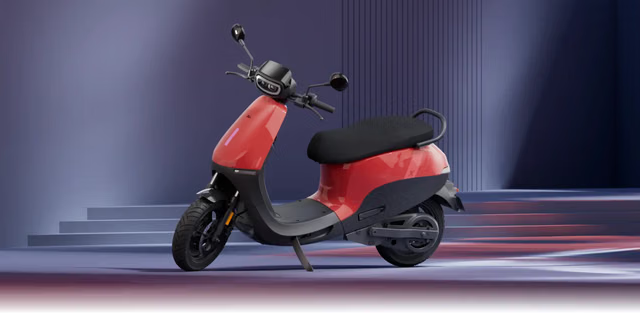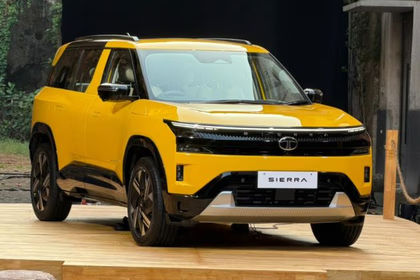Introduction
As Diwali as the biggest festival, is approaching,, many shoppers are looking to upgrade, and there’s no better time to invest in a cleaner, smarter way to get around. Electric scooters have moved from being a novelty to serious options for daily commuting. With rising fuel costs, increasing environmental awareness, better subsidy programs, and festive deals flooding the market, this Diwali presents a great chance to join the EV trend. In this article, we explore why electric scooters are an excellent choice for Diwali purchases and what to consider before making a decision.
Why Electric Scooters Are a Great Diwali Purchase
Festival offers, discounts, and financing perks.
- During Diwali, many manufacturers and banks partner to offer low-interest EMIs or zero-interest financing for electric scooters.
- Diwali is usually a busy sales season, so dealers may be more open to negotiating or providing rebates to meet sales goals.
Rising fuel prices and environmental concerns
- Petrol and diesel prices continue to rise, making the operating cost of internal combustion engine (ICE) vehicles higher.
- An electric scooter significantly lowers your fuel costs by replacing petrol with electricity, often leading to considerable savings over time.
- Switching to electric reduces carbon emissions, local air pollution, and noise, helping to create cleaner, quieter cities.
Government incentives and subsidies
- At the central level, programs like PM E-DRIVE (the successor to FAME) offer demand incentives, such as ₹2,500 per kWh for eligible electric two-wheelers, to lower upfront costs.
- Many states provide additional subsidies, tax waivers, discounts on registration, or exemptions from road tax.
- In some states, only locally made or assembled EVs qualify for the full subsidy or benefits. For example, in UP, only “Made in UP” vehicles will be eligible after October 14, 2025.
- The subsidy is usually transferred to the consumer at the point of sale through a discounted invoice by the manufacturer or dealer, so make sure to check if your chosen model is on the approved list.
What buyers should look for
Real-world range vs claimed range
- The range provided by manufacturers is usually based on a “test cycle” range (e.g., ARAI or IDC), measured under optimal conditions like low speed, ideal road, and moderate temperature.
- Real-world factors such as traffic, riding style, payload (passenger plus luggage), hills, and weather can significantly reduce that range.
- Always check the reviews of users, user reviews, and real-life tests to see what actual users experience; some scooters lose 20 to 40% of their claimed range in real conditions.
- It’s smart to have a buffer; choose a model whose real-world range comfortably covers your daily needs plus some extra for unexpected detours.
Charging convenience
- Does the scooter charge using a standard household socket (230 V)?
If so, how long does it take to charge from, say, 0 to 80% or 0 to 100%?
- Is there a fast-charging option (e.g., 0 to 80% in about 1 hour)?
This is helpful when you’re out and about.
- Does the scooter have a swappable battery or a removable battery pack?
This lets you swap in a fresh battery at a battery-swapping station or carry the battery inside to charge separately. This feature is useful if you don’t have a dedicated parking spot with a charger.
- How comprehensive is the public charging or swapping setup in your city?
A limited network can reduce how you use the scooter.
 Performance
Performance
- What is the scooter’s top speed?
This is important if some of your rides include fast roads or highways.
- How quickly is the acceleration from 40 km/h to 60 km/h?
Good acceleration helps when starting in traffic or overtaking.
- Does the scooter have multiple riding modes?
These help balance performance and efficiency. Torque and power output also matter; more torque means better hill climbing and the ability to carry heavier loads.
Build quality, safety features
- The frame, materials, finishes, and rigidity matter; a well-built scooter handles road vibrations and potholes well, giving you confidence in its stability.
- Suspension quality (front forks, rear shock absorbers) is important, especially on Indian roads with potholes and rough patches.
- Tires: Tubeless tires help lower the risk of punctures and simplify repairs.
- Additional safety features such as an anti-theft alarm, immobilizer, reverse mode, fall detection, or traction control (if available) are good extras.
Criteria for Selection
To create a reliable and practical list of electric scooters worth purchasing this Diwali, I followed clear criteria that focus on practicality, performance, and value. The aim is to showcase models that are not just sound in theory but also provide real usability, appeal to a wide range of buyers, and likely feature festive deals or availability this season. Below are the specific factors I used to select the candidates.
Price range considered (e.g., under ₹1.5 lakh, premium, etc.)
- I included scooters from mid-range (affordable for many buyers) to premium models—roughly from ₹75,000 to ₹1,80,000 (ex-showroom). This range covers both everyday commuters and aspirational buyers.
- I excluded models priced significantly below that range if their features or range were too limited for practical use.
- Premium models were included only if they provided notable value (range, features, brand reliability) that justifies their higher price.
Range thresholds (e.g., >100 km, >150 km)
- The list favors scooters that offer at least 100 km of usable range under normal riding conditions, making them practical for daily use without worrying about range.
- Some models offer over 150 km or more in optimal or extended-range versions; these are weighted more heavily in the selection, especially for buyers with heavier usage or occasional longer trips.
- Scooters that promise very low range (e.g., <60–80 km) were generally left out unless they had compensating advantages (very low cost, swappable battery, etc.).
Features (connectivity, ride modes, battery type / swappable)
- I prioritized models with smart connectivity (e.g., mobile app integration, GPS, remote diagnostics) since these features provide real benefits (theft alerts, usage analytics, OTA updates).
- Ride modes (eco, sport, city) are a bonus, as they allow riders to adjust performance vs. efficiency based on their needs.
- Battery design is important: permanently mounted versus swappable or removable packs. Swappable battery capability is a key feature, especially in areas with limited charging options.
- Fast charging, battery management systems (BMS), and thermal management in batteries (heat control) are important for durability and everyday usability.
Availability & deals around Diwali
- Even the best scooters prioritized models with good availability in showrooms and manageable delivery times in the target buying regions.
- Since many buyers will look for Diwali-related offers, I gave more weight to models from brands that typically provide strong Diwali discounts, bonus exchanges, free accessories, or financing options.
- The strength of local dealerships (number of franchisees, stock levels) was also considered. Hence, readers in various Indian cities have a realistic chance of obtaining the scooter during the festival season.
Top Picks: Electric Scooters to Buy This Diwali
| Electric Scooters | Approx Price | Range / Battery | Top Speed & Performance | Highlights | Things to Watch |
| Ola S1 Pro | Premium segment | ~180-195 km range (depending on variant) | High speed, strong motor & features | Packed with features, long range, strong brand & network | Costlier; charging time; maybe heavier; depends on exact spec |
| Hero Vida V2 / V1 Pro | Mid-premium | ~165 km (for higher variants) | Good speed; removable batteries in some models | Good for those who want flexibility via swappable/removable batteries; strong features | Higher variants are expensive; availability & service might vary by city. |
| Ather 450X / 450S | Mid-premium | ~115-160 km depending on variant | Decent performance; smooth ride; good tech stack | Excellent riding experience, software support, and brand recognition | Price high; premium maintenance; charging infrastructure still a concern in some areas |
| Bajaj Chetak | Premium classic segment | ~95-153 km depending on variant | Looks & feel + good build; retro design | Stylish choice; strong after-sales; sturdy build | Lower top speed; heavier; fewer fast-charge options, perhaps |
| TVS iQube ST | Balanced / Urban commuter | Up to ~145 km in newer battery pack versions | Reliable performance; good dealer support | Practical choice for city use; brand trust; service network | Less exotic features; may lag in latest tech; cost-benefit depends on variant |
Festive Offers & Buying Tips
During Diwali, brands and dealerships do everything they can to attract buyers with appealing deals. This landing, a “good deal,” goes beyond just the discount. Being savvy about subsidies, test rides, and charging setups can help you avoid surprises later. Below are typical offers to look for, tips to verify subsidies, how to assess a scooter during a test ride, and key aspects of charging logistics.
What kinds of Diwali offers are typically available
- Exchange bonuses or trade-in credit, many dealers provide extra value when you turn in your old petrol two-wheeler. Sometimes, this is above its fair resale value to encourage the transition to electric vehicles.
- Lower down payments, some financing schemes during Diwali allow for a lower upfront payment than usual, making it easier to get started.
- Reduced or zero interest on EMIs, brands often work with financiers to offer lower interest rates for a limited time.
- Cash discounts or rebate packages, direct price cuts, or cashback offers are common, especially for popular models.
- Free or discounted accessories and add-ons, you may receive helmets, chargers, extended warranties, insurance, servicing credits, or even free installation of home chargers in some cases.
- Corporate or fleet discounts, in some cities, scooters purchased for delivery services, institutional buyers, or group purchases may receive additional incentives.
- Festive guarantee or delivery promise benefits, some brands guarantee assured delivery or offer priority slots for bookings made during Diwali. They may even provide a bonus if there are delays.
- Bundled financing offers, some promotions waive or reduce registration, handling, or documentation charges during the festival period.
Checking state subsidies and incentives
- Understand the subsidy schemes active in your state. The central EV subsidy, such as under FAME or similar programs, may be combined with state-level incentives like rebates, reduced road tax, or registration waivers.
- Review eligibility criteria closely, as some subsidies apply only to specific battery capacities or vehicle classes, or are limited to certain cities.
- Confirm whether the subsidy is already included in the price. In many instances, the ex-showroom price is already adjusted for the subsidy, so ask the dealer to break down the pre-subsidy and net subsidy values.
- Verify through official websites. States typically have online EV subsidy portals or registration systems. Check to see if your model is listed or approved.
- Watch for deadlines and budget limits, as subsidies may have limited quotas or cut-off dates, and festive season demand may quickly deplete subsidy availability.
- Keep records of the subsidy application and documentation, ensuring all paperwork is in order, such as dealer applications and state approvals, to avoid losing out later.
Test ride tips: How to judge real range and how the scooter handles traffic and potholes
- Ride in real traffic conditions, test the scooter during peak traffic hours in your area, including stop-and-go situations, to see how it accelerates, recovers, and handles delays.
- Simulate two-rider load or uphill rides, add extra weight, or ride on inclines to assess performance under stress.
- Check battery drop over distance, note how much the charge percentage decreases over the first 10 to 20 km, and use that to predict full ride performance. This insight helps you understand battery behavior.
- Test ride on poorly maintained roads or potholes to evaluate suspension comfort, frame rigidity, vibrations, and how well the scooter maintains balance and control.
- Try different ride modes, such as eco, sport, and normal. Switch modes mid-ride to see how responses, torque, smoothness, and mode shifts differ.
- Observe braking and regenerative behavior, assess how braking performs at various speeds, whether regenerative braking is effective or too abrupt, and how the scooter responds to sudden stops.
- Check handling and maneuverability in tight spaces, navigate narrow lanes, turns, U-turns, or parking lots to see how easy it is to control and balance.
- Monitor battery warm-up or heat behavior, after a few minutes of riding, feel whether the battery or motor area becomes excessively hot.
Charging logistics: removable batteries, home charger installation, and public chargers
- Battery type and removability: if the scooter has a removable or swappable battery, check how easy it is to detach, its portability, connector design, and safety features like locks and handling.
- Home charger installation feasibility: ensure your home or garage has a 15 to 20 A outlet, proper grounding, and suitable cable routing. Find out if the dealer provides a home charger or subsidized installation.
- Charger capacity and charge time, confirm that the charger included or compatible is sufficient for overnight charging.
- Public charging or swapping network in your area, map out existing public chargers, battery-swap stations, and charging hubs along your regular commute.
- Reliability and uptime of public chargers, local reports, or user forums can inform you about how well charging stations are maintained and whether they frequently have downtime.
- Backup plan and flexibility, if your main charger or infrastructure fails, consider whether you can use alternate chargers or swap stations.
- Charging costs and tariffs, understand the per kWh cost at your home or public charger, and check if peak or off-peak rates impact your overall expenses.
- Safety in charging, check that the charger includes overcurrent and thermal protection as well as surge protection. Also, verify if the scooter’s battery management system safely manages over-voltage or under-voltage situations.
Comparison Table
| Scooter Model | Range (km) | Battery (kWh) | Price (Ex‑Showroom ₹) | Top Speed (km/h) | Charging Time (hrs) | Kerb Weight (kg) |
| Ola S1 Pro | 176 | 3.97 | 1,35,000 – 1,60,000 | 117 | 6.5 | 109 |
| Ather 450X | 126 | 2.9 – 3.7 | 1,49,000 | 90 | 4.3 | 108 |
| TVS iQube ST | 145 | 4.0 | 1,23,000+ | 78 | 4.3 | 129.7 |
| Bajaj Chetak | 126 | 3.0 | 1,07,000 | 70–75* | 5.0–5.5 | 125 |
| Hero Vida V2 | 110–120 | 2.5 – 3.0 | 1,05,000 – 1,20,000 | 85–90 | 4.0–5.0 | 110–115 |
Conclusion
An electric scooter depends on your lifestyle, daily commute, and what you value most: range, style, or cost-effectiveness. Suppose you mainly navigate city traffic with frequent stops and shorter trips. Meanwhile, budget-conscious buyers can consider the Bajaj Chetak Premium as a reliable option that is moderately priced with a decent range.
This Diwali festive offers carefully; exchange bonuses, EMI schemes, and free accessories can really make a difference. Make sure to verify the real-world range, battery type, and service network coverage in your city, by balancing features, range, and cost, an Electric scooter that meets your needs while making a smart, eco-friendly investment this festive season.
FAQs
Q1. What is the IDC range vs the real-world range?
IDC range (Indian Driving Cycle) is the range that the manufacturer claims based on standardized test conditions. Real-world range is what you can actually expect during daily use. It is influenced by speed, traffic, terrain, rider weight, climate, and riding style. As a general rule, real-world range is often 10 to 30% lower than the IDC range.
Q2. Is fast charging worth it?
Fast charging can significantly cut downtime, especially if you have a tight schedule or cover a lot of distance daily. However, frequent fast charging can create more heat in the battery, which may slightly impact its long-term health. The ideal approach is to use fast charging when necessary and rely on regular overnight home charging for everyday use.
Q3. What to do about battery degradation?
Battery capacity naturally decreases over time, usually by 5 to 10% per year, depending on how you use and charge it. To minimize degradation, don’t constantly overheat or overuse fast charging, and keep the scooter in moderate temperatures. Most modern EVs come with a warranty on the battery (often 3 to 5 years), so check the terms when buying.
Q4. How safe are electric scooters in the rainy season?
Modern electric scooters are built to meet waterproofing standards for the battery and electronics, often rated IP65 or higher. Make sure the scooter has proper insulation, sealed connectors, and good traction tires for wet roads. Ride carefully in heavy rain; avoid deep water puddles and high-speed turns. Regular maintenance, including checking brakes, tires, and lights, is essential for safety during the rainy season.




